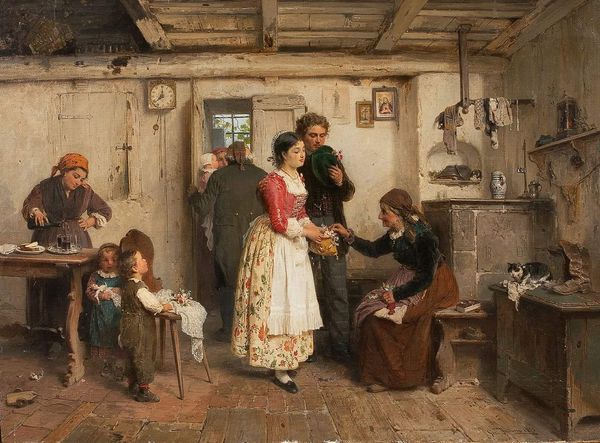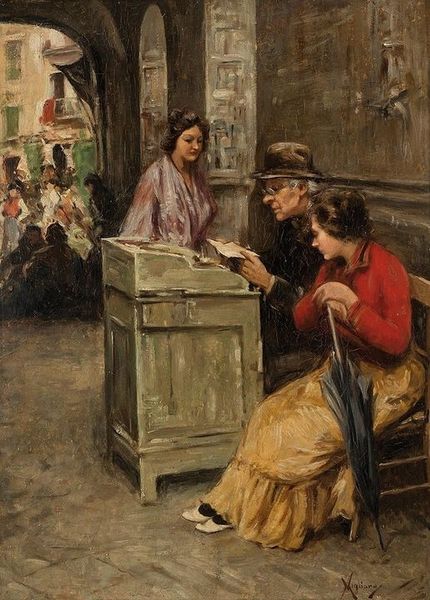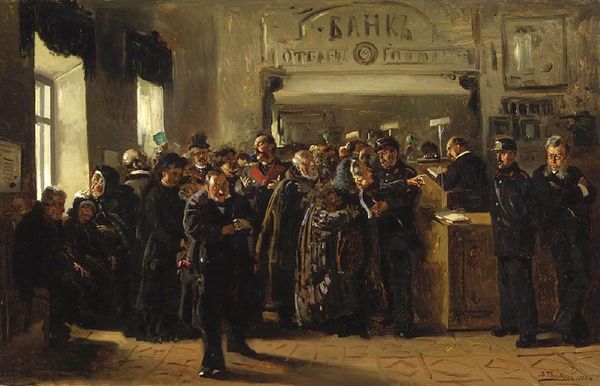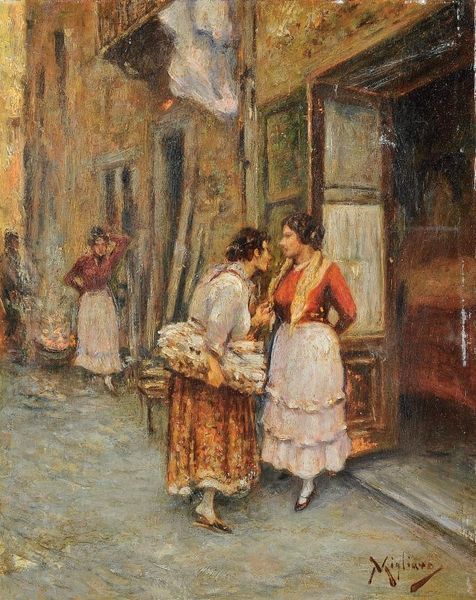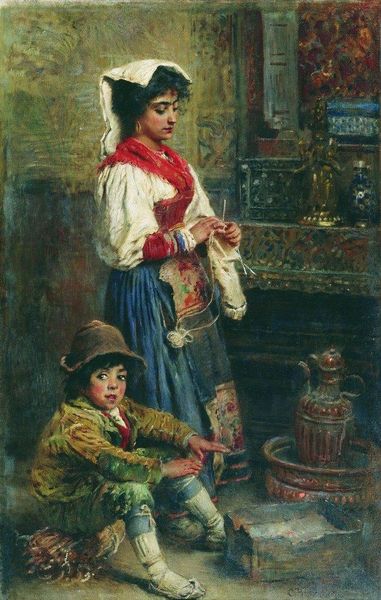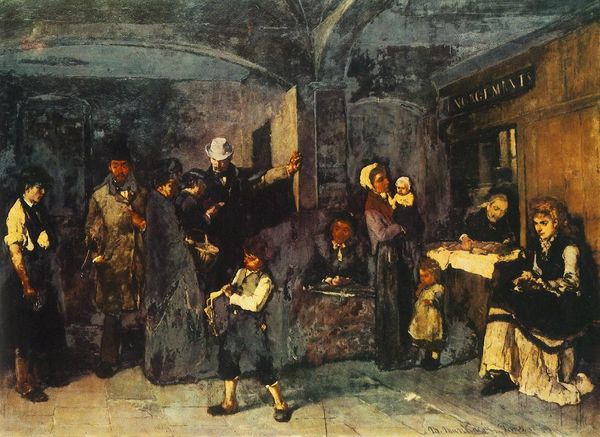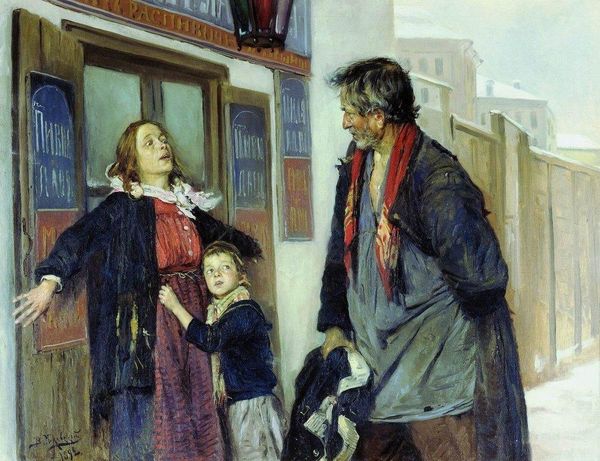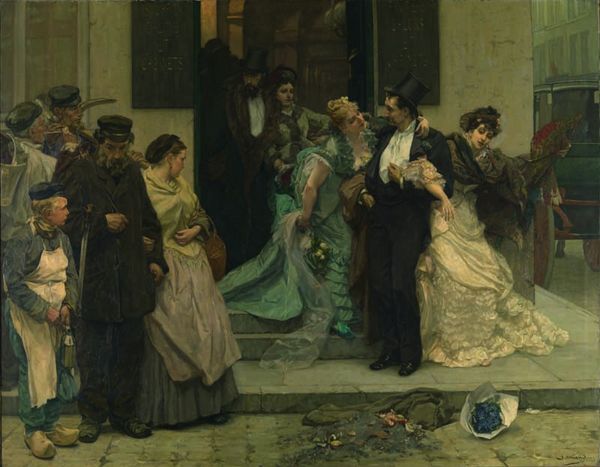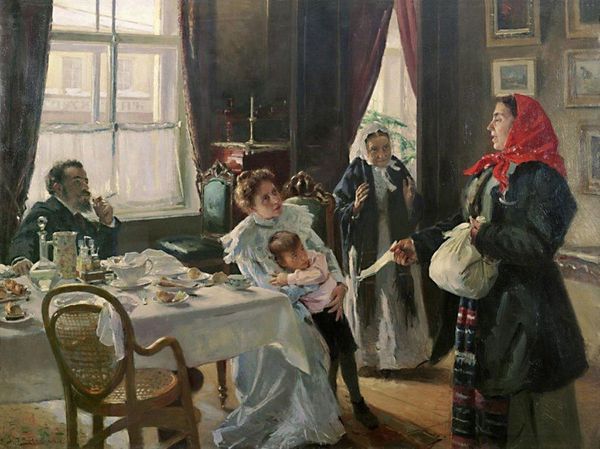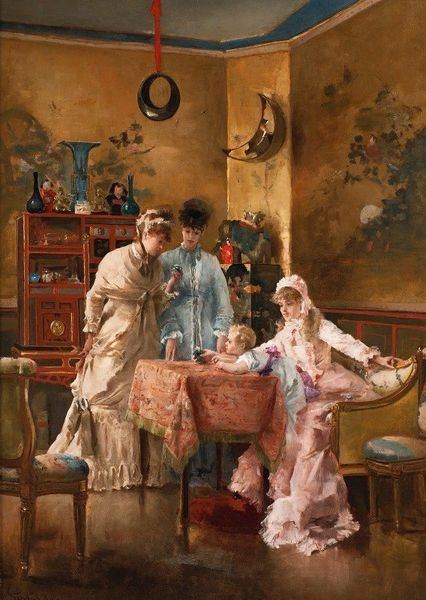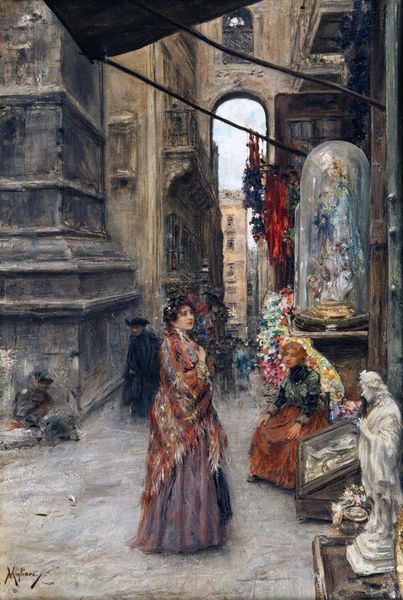
Dimensions: 40.5 x 54 cm
Copyright: Public domain
Curator: This is "The Choice of Wedding Presents," an 1898 oil painting by Vladimir Makovsky. The canvas captures a bridal shop scene with varied figures and subtle storytelling. What are your initial impressions? Editor: The diffused light immediately strikes me; it unifies the diverse subjects. The arrangement presents a study in contrasts - youth versus age, eagerness against, perhaps, apprehension, and inside looking out. Curator: Exactly. The artist employs a muted palette that emphasizes the materiality of textures – from the rough coats of the bystanders to the delicate lace of the veil. Semiotically, it all signals a social narrative of class and expectation. Editor: Absolutely. Makovsky, active during a time of immense social change in Russia, consistently examined the tensions within societal structures. The bride, positioned at the fulcrum of observation, is both a symbol of hope and a subject of economic exchange, if one considers dowries. The two observers to the left have me most intrigued; the gentleman smoking, in a military cap perhaps. Curator: That’s right; they form a counterpoint to the central drama. The painting isn't merely a portrait; it's a careful construction of social roles. See how Makovsky contrasts the active engagement of the shopkeeper with the passive observation of the other figures. Consider the shop window itself; its glass reflects the internal happenings outwards, creating a blurred vision for outsiders, us as viewers too, mirroring society's role in shaping the wedding event. Editor: Yes, and even within the shop’s semi-transparent facade we perceive an ambiguity regarding whose choices matter. Is it about the young bride or her elder relatives? It’s interesting that, in this public moment, individual emotions are suppressed or, rather, performed for the gathered audience. Curator: It’s a fascinating negotiation of space and identity. The city background subtly reminds us of the economic reality framing this intimate ritual, adding weight to this seemingly joyful decision. Editor: True, Makovsky uses this orchestration of characters and elements to prompt us to ponder about the expectations within a marital agreement and how it reflects wider Russian society during that period. Curator: It reminds us to look deeper, examining the interplay between personal desires and social determinism as they shape a key rite of passage. Editor: Indeed, analyzing Makovsky's compositional structure reveals far more than just a bridal purchase. Thank you.
Comments
No comments
Be the first to comment and join the conversation on the ultimate creative platform.
